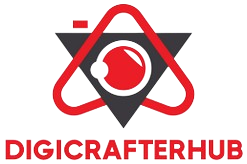With the rise of 3D printing technology, the world of design and prototyping has experienced significant evolution. One of the tools gaining traction in the DIY and professional community is the 3D pen. But can you genuinely use a 3D pen to create prototypes for design projects? This article delves into the feasibility, techniques, and applications of 3D pens in the world of design and prototyping.
Table of Contents
- Introduction
- Understanding 3D Pens
- Advantages of Using 3D Pens for Prototyping
- Techniques for Effective Prototyping With 3D Pens
- Applications in Various Design Fields
- Challenges and Limitations
- Conclusion
Understanding 3D Pens
A 3D pen is a handheld device that allows users to draw three-dimensional objects by extruding heated plastic filament. These pens come in various styles and designs but generally function similarly to a hot glue gun. The filament is heated and melted inside the pen and extruded through the nozzle, where it cools and solidifies almost instantly.
Advantages of Using 3D Pens for Prototyping
1. Cost-Efficiency
3D pens are generally more affordable than traditional 3D printers. They require less initial investment and are cost-effective concerning material usage. For small prototypes, a 3D pen can offer significant cost savings.
2. Portability
Unlike bulky 3D printers, 3D pens are portable and can be used anywhere with a power source. This feature is particularly beneficial for designers who are frequently on the move or work in different environments.
3. Quick Iterations
Prototyping with a 3D pen allows for quick modifications and iterations. You can easily add or modify parts of your prototype, making it easier to test various design concepts rapidly.
4. Artistic Flexibility
3D pens offer a unique combination of functionality and artistic flexibility. Designers can not only create structural prototypes but also add intricate details and textures, enhancing the overall aesthetics of the prototype.
5. Minimal Space Requirement
Another advantage is that 3D pens occupy minimal space compared to traditional 3D printers. This makes them ideal for small workspaces or home offices.
Techniques for Effective Prototyping With 3D Pens
Creating effective prototypes with a 3D pen requires a blend of creativity and technical skills. Here are some essential techniques to keep in mind:
- Layering: Begin with a strong base and add layers systematically. Ensure each layer has cooled down before adding the next one to maintain structural integrity.
- Use Templates: Utilize templates or stencils to guide your design, ensuring uniformity and accuracy in your prototype.
- Combining Materials: Mix different types of filaments or use other materials like cardboard or metal wires to enhance the strength and functionality of your prototype.
- Finishing Touches: Use sandpaper or other smoothing tools to give your prototype a polished look.
- Heating Adjustments: Adjust the pen’s temperature settings based on the material used to ensure smooth extrusion and better control.
Applications in Various Design Fields
3D pens have found applications in a wide range of design fields. Here are some sectors where 3D pens are making a significant impact:
1. Product Design
In product design, 3D pens can be used to create small-scale prototypes for consumer goods, electronics, and household items. This allows designers to quickly visualize and test their ideas before committing to expensive machining or mold-making processes.
2. Fashion and Jewelry
Fashion designers and jewelers use 3D pens to prototype intricate designs. The ability to create complex shapes and fine details makes 3D pens ideal for bespoke jewelry and avant-garde fashion pieces.
3. Architecture
Architects use 3D pens for quick, small-scale architectural models. These models help in understanding the spatial relationships and aesthetics of a design, offering a tangible representation that can be invaluable during client presentations or team discussions.
4. Education
In educational settings, 3D pens are used to teach students principles of design, engineering, and 3D modeling. They provide a hands-on experience that can enhance learning and stimulate creativity.
5. Art and Sculpture
Artists and sculptors use 3D pens to create unique pieces of art. The ability to draw in three dimensions opens up new avenues for artistic expression that traditional two-dimensional tools cannot offer.
Challenges and Limitations
While 3D pens offer numerous advantages, they also come with their own set of challenges and limitations:
1. Precision Issues
Achieving high precision with a 3D pen can be challenging due to its manual nature. Unlike 3D printers, which operate on pre-programmed instructions, 3D pens rely on the user’s steady hand and accuracy.
2. Material Constraints
The range of materials that can be used with 3D pens is limited compared to traditional 3D printers. This can restrict the types of prototypes that can be created.
3. Complexity of Designs
Creating highly complex or large-scale designs can be time-consuming and difficult with a 3D pen. For intricate detail and larger projects, a traditional 3D printer may be more suitable.
4. Durability
Prototypes made with 3D pens may not be as durable as those created with other prototyping methods. The manual layering process can sometimes result in weaker structures.
Conclusion
In summary, a 3D pen can certainly be used to create prototypes for design projects. While they may not replace traditional 3D printers or other prototyping methods entirely, they offer a unique, cost-effective, and quick way to visualize and test design ideas. With the right techniques and an understanding of their limitations, 3D pens can be a valuable addition to any designer’s toolkit.
